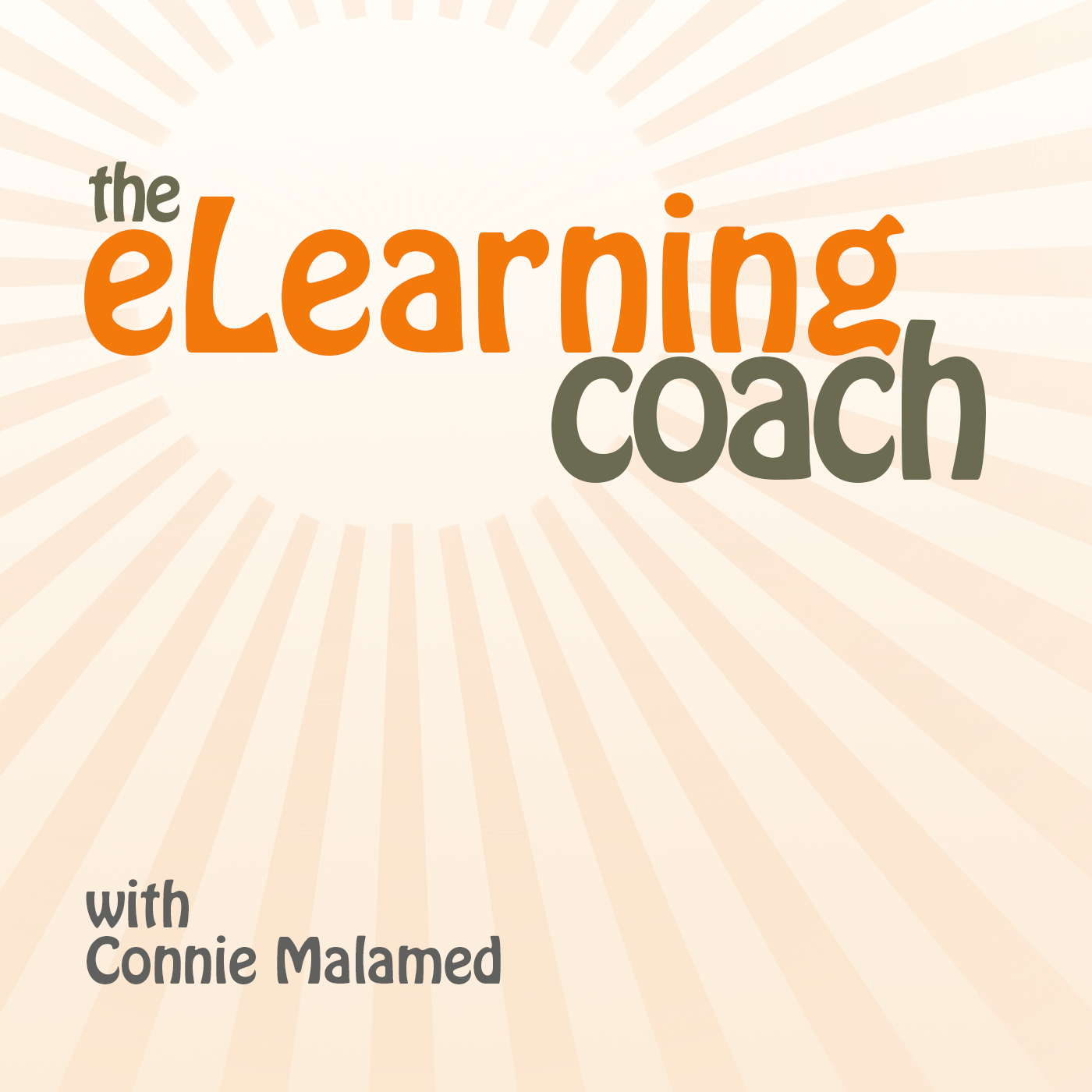
Designing with Love
Hosted by Grand Canyon University (GCU) adjunct instructor and professional instructional designer Jackie Pelegrin, this podcast explores instructional design, e-learning, and how to incorporate AI technology into different aspects of your work. Tune in for expert tips, real-world insights, and inspiring stories from students, alumni, and leaders in the field.
Designing with Love
Mastering Complex Learning with the 4C/ID Model
Struggling with designing effective learning for complex skills? The Four-Component Instructional Design Model (4C/ID) might be exactly what you need in your instructional design toolkit.
Most traditional learning models start with content and theory, expecting learners to somehow piece together application later. The 4C/ID model flips this approach on its head by starting with realistic whole tasks and building support around them, making learning immediately relevant and practical. This podcast episode breaks down the four essential components: learning tasks (realistic challenges), supportive information (concepts and theories), procedural information (step-by-step guidance), and part-task practice (focused skill drills).
As John Dewey wisely noted, "Give the pupils something to do, not something to learn, and the doing is of such nature as to demand thinking; learning naturally results." That's the essence of the 4C/ID model, and potentially the key to your next successful instructional design project. Ready to learn more? Check the show notes for links to additional resources, including the official 4C/ID website and an interactive infographic summarizing this episode. Your journey toward more effective complex skill development starts here!
🔗 Episode Links:
Please check out the resources mentioned in the episode. Enjoy!
Join PodMatch!Use the link to join PodMatch, a place for hosts and guests to connect.
Disclaimer: This post contains affiliate links. If you make a purchase, I may receive a commission at no extra cost to you.
💟 Designing with Love + allows you to support the show by keeping the mic on and the ideas flowing. Click on the link above to provide your support.
☕ Buy Me a Coffee is another way you can support the show, either as a one-time gift or through a monthly subscription.
🗣️ Want to be a guest on Designing with Love? Send Jackie Pelegrin a message on PodMatch, here: Be a guest on the show
🌐 Check out the show's website here: Designing with Love
📱 Send a text to the show by clicking the Send Jackie a Text link above.
👍🏼 Please make sure to like and share this episode with others. Here's to great learning!
Hello and welcome to the Designing with Love podcast. I am your host, Jackie Pelegrin, where my goal is to bring you information, tips, and tricks as an instructional designer. Hello, GCU students, alumni, and fellow educators, welcome to episode 52 of the Designing with Love podcast. Today, we're diving into one of the most powerful and most often overlooked models for designing instruction, the Four-Component Instructional Design Model, which is commonly known as the 4C/ID model. This model is especially useful when you're tackling complex learning, which is the kind of learning that requires more than just memorization. Some areas to think about are problem solving, critical thinking, clinical decision making, or mastering a process with many interconnected parts. So, when is it actually beneficial to use the 4CID model? Let's break it down. First, here's a quick refresher, especially if you're new to instructional design.
Jackie Pelegrin:The 4C/ID model is grounded in cognitive load theory and is designed for learning tasks that require the integration of knowledge, skills, and attitudes. The model is built on four components, which are component number one: learning tasks, and realistic whole tasks that reflect real-world challenges. Component number two: supportive information. Concepts, strategies, and theories that help learners perform non-routine aspects of the task. Component number three procedural information: step-by-step guidance for routine aspects of the task. And finally, component number four: part- task practice. Focus drills for skills that must be automated. This model isn't just another checklist; it's a blueprint for helping learners build competency through integration and transfer. Now let's talk about when it's most beneficial to use the 4CID model. Reason number one: designing for complex skills. If you're developing training for tasks that require multiple skills, working in tandem, like diagnosing a patient, piloting an aircraft, or leading a project, 4cid is a perfect fit. These are tasks that learners can't master by learning isolated facts. They need to practice applying knowledge in context. Reason number two when transfer of learning is key.
Jackie Pelegrin:One of the great things about the 4C/ ID model is its focus on transfer. If you want learners to apply what they've learned in a variety of new and unpredictable situations, this model supports that kind of deep learning. Instead of relying on rote memorization, learners develop the mental modes necessary to adapt and apply what they know. Reason number three is training in high-stakes environments. This model shines in industries like healthcare environments. This model shines in industries like healthcare, aviation, and engineering, where errors can be costly. By focusing on real-life tasks and giving learners opportunities to engage with whole task practice early and often, you're preparing them for the challenges they will actually face. Reason number four is long-term skill development. If you're aiming for sustained performance over time, not just a quick win, 4cid supports long-term retention through progressive scaffolding and meaningful practice. This is a game changer for learners high-stakes in these high-stakes environments.
Jackie Pelegrin:Unlike content-heavy models, 4C/ID doesn't start with a slide deck or a lecture. It starts with the whole task that builds the support around that. This makes the learning feel more authentic and allows learners to construct mental modes based on real-world scenarios. In fact, using the 4C/ID model often leads to better learner engagement because it puts them in the driver's seat from the very beginning. This is what learner-centered education and training is all about. All right.
Jackie Pelegrin:So now that you have a solid understanding of what the 4C/ID model is, when you should use it, and what makes it different, I will take a few minutes to provide you with a practical example of the model in action. Here's the scenario. Let's say you're designing a course for new project managers. Rather than start with "What is a Gantt chart or define scope creep, you begin with a realistic project scenario, like launching a product. From there, you can do the following: Provide supportive information, like strategies for stakeholder communication. Procedural information for setting up a project plan part task practice, like writing SMART goals or prioritizing tasks. By doing this, everything is tied to a meaningful, real-world task, not just abstract knowledge. So, as a recap, when should instructional designers use the 4C/ID model? When teaching complex integrated tasks, when long-term transfer is important in high- stakes or performance-driven environments, and when you want learning to mirror real life? If that sounds like your next project, give 4C/ID a try. It might take more planning up front, but the results will be well worth it for your learners.
Jackie Pelegrin:As we always say on this podcast, learning design isn't just about structure; it's about impact. The 4C/ID model helps you make learning stick in the most meaningful ways. You are welcome to explore the official 4C/ID website to obtain resources and learn more about events and training. The link to the website is available in the show notes. In addition, you are welcome to check out the interactive diagram, which covers the key information in this episode. The link for the infographic is also available in the show notes. As I conclude this episode, here's an inspiring quote from John Dewey Give the pupils something to do, not something to learn, and the doing is of such nature as to demand thinking; learning naturally results. Thank you for taking some time to listen to this podcast episode today. Your support means the world to me. If you'd like to help keep the podcast going, you can share it with a friend or colleague, leave a heartfelt review, or offer a monetary contribution. Every act of support, big or small, makes a difference, and I'm truly thankful for you.
Podcasts we love
Check out these other fine podcasts recommended by us, not an algorithm.

Buzzcast
Buzzsprout
Podcasting Made Simple
Alex Sanfilippo, PodMatch.com
The eLearning Coach Podcast
Connie Malamed: Helps people build stand-out careers in learning design.
Dear Instructional Designer
Kristin Anthony
The Visual Lounge
TechSmith Corporation
Wake Up the Lions!
Rory Paquette
The Way I Heard It with Mike Rowe
The Way I Heard It with Mike Rowe
Book 101 Review
Daniel Lucas
Movie 101 Review
Daniel Lucas And Bob LeMent
Mental Health 101
Daniel Lucas/G.Mick Smith
LOVE Letters
Daniel Lucas
The WallBuilders Show
Tim Barton, David Barton & Rick Green
